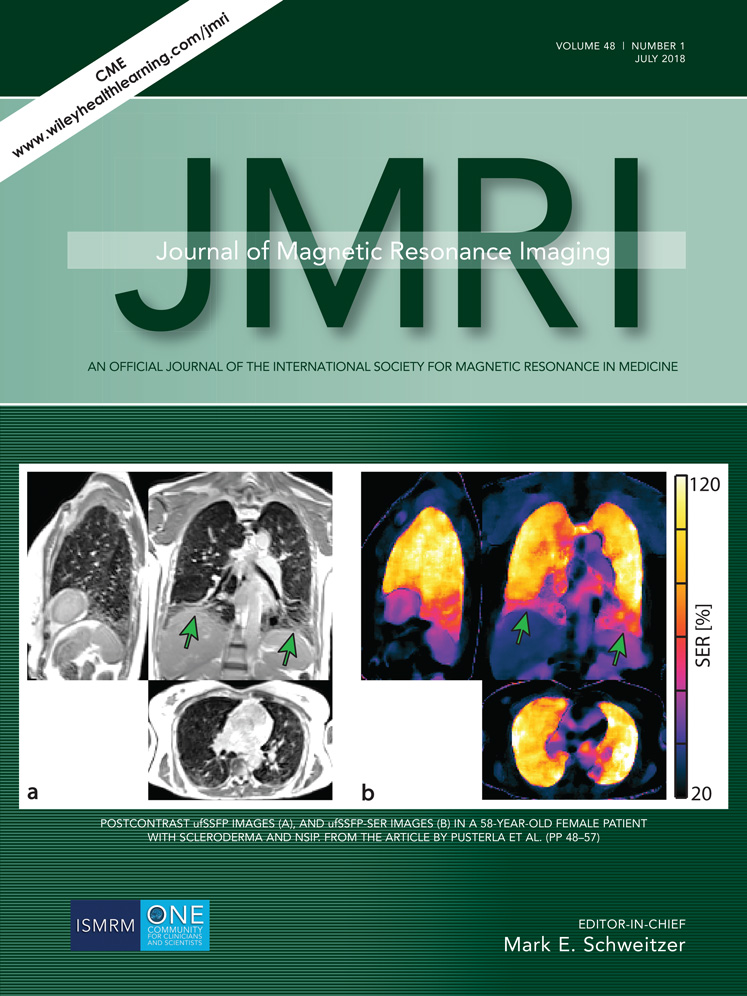4D flow MRI, cardiac function, and T1-mapping: Association of valve-mediated changes in aortic hemodynamics with left ventricular remodeling
Abstract
Background
Patients with bicuspid aortic valve (BAV) show altered hemodynamics in the ascending aorta that can be assessed by 4D flow MRI.
Purpose
Comprehensive cardiac MRI was applied to test the hypothesis that BAV-mediated changes in aortic hemodynamics (wall shear stress [WSS] and velocity) are associated with parameters of left ventricular (LV) remodeling.
Study Type
Retrospective data analysis.
Population
Forty-nine BAV patients (mean age = 50.2 ± 13.5, 62% male).
Field Strength/Sequence
Balanced steady-state free precession (bSSFP)-CINE, pre- and postcontrast T1 mapping with modified Look–Locker inversion recovery (MOLLI), time-resolved 3D phase-contrast (PC) MRI with three-directional velocity encoding (4D flow MRI) at 1.5 and 3T.
Assessment
Quantification of LV volumetric data and myocardial mass, extracellular volume fraction (ECV), aortic valve stenosis (AS), and regurgitation (AR). 3D aortic segmentation, quantification of peak systolic velocities, and 3D WSS in the ascending aorta (AAo), arch, and descending aorta (DAo).
Statistical Tests
Two-sided nonpaired t-test to compare subgroups. Pearson correlation coefficient for correlations between aortic hemodynamics and LV parameters.
Results
Of the 49 BAV patients, 35 had aortic valve dysfunction (AS [n = 7], AR [n = 16], both AS and AR [n = 12]). Mean systolic WSS in the AAo, peak systolic velocities in the AAo and arch, and LV mass were significantly higher (P < 0.001) in the AS/AR group compared to the patients without AS/AR. In the complete group, we observed significant relationships between increased LV mass and elevated peak systolic velocity (r = 0.57, r = 0.58; P < 0.001) and WSS in the AAo and arch, respectively (r = 0.54, r = 0.46; P < 0.001). We detected an association between ECV and WSS in the AAo (r = 0.38, P = 0.02). These relations did not hold true for patients without AV dysfunction.
Data Conclusion
AS and AR in BAV patients have a major impact on elevated aortic peak velocities and WSS that were associated with parameters of LV remodeling.
Level of Evidence: 3
Technical Efficacy: Stage 3
J. Magn. Reson. Imaging 2017.




